Explore this comprehensive nursing care plan and management guide to deliver optimal care for individuals facing bronchopulmonary dysplasia (BPD). Acquire valuable knowledge on nursing assessment, targeted interventions, goal setting, and customized nursing diagnoses designed specifically for bronchopulmonary dysplasia.
What is Bronchopulmonary Dysplasia?
Bronchopulmonary dysplasia (BPD) is the most common chronic pulmonary disease that affects low birth weight and premature infants who received assistive ventilation due to respiratory distress syndrome. BPD is fibrosis, or thickening, of the alveolar walls and the bronchiolar epithelium. Swelling of the tissues causes edema, and the respiratory cilia are paralyzed by the high oxygen concentrations and lose their ability to clear mucus from the airways.
This condition occurs from a deficiency in lung surfactant, damage to the lungs caused by ventilator pressure, and exposure to high oxygen concentrations. Infants experiencing BPD may develop labored breathing, tachypnea, wheezes, oxygen dependence, cyanosis, abnormal ABGs and chest findings, poor weight, and repeated lung infections that may require frequent and prolonged hospitalizations. BPD may resolve by the time the child reaches three to four years of age.
The aim of the management of BPD is to support infants while lung growth occurs, limit further injury to the lungs, optimize lung function, and detect complications associated with BPD. BPD is a chronic illness that persists beyond discharge from the hospital. Infants have an increased risk of developing reactive airway disease, asthma, emphysema, and RSV bronchiolitis. They are also at high risk for cardiopulmonary sequelae like pulmonary hypertension, cor pulmonale, and systemic hypertension (Sahni, 2022).
Nursing Care Plans & Management
The nursing care plan management for patients with bronchopulmonary dysplasia (BPD) is directed at maintaining respiratory function, ensuring optimal growth and development, and preventing further complications. These can be attained by maintaining a patent airway, promoting adequate oxygenation and ventilation, administering medications and therapies as indicated, ensuring sufficient nutrition and hydration, supporting developmental milestones, and teaching the child’s caregivers about disease management and preventive measures.
Nursing Problem Priorities
The following are the nursing priorities for patients with bronchopulmonary dysplasia (BPD):
- Airway management: Perform a thorough assessment of the patient’s respiratory status, implement appropriate airway interventions, administer oxygen therapy, monitor ventilator settings (if applicable), and ensure optimal positioning to optimize lung function.
- Oxygen therapy: Verify the functionality of oxygen delivery systems, closely monitor oxygen saturation levels, and adjust the oxygen flow rate as necessary to maintain adequate oxygenation.
- Pharmacological management: Safely administer medications, monitor for potential adverse reactions or side effects, and educate the patient and their family on the purpose and correct administration of each medication.
- Nutrition and growth: Monitor the patient’s nutritional intake closely, provide guidance on appropriate feeding techniques, assess growth parameters regularly, and collaborate with the healthcare team to develop an individualized feeding plan.
Nursing Assessment
The focus of nursing assessment for bronchopulmonary dysplasia (BPD) is primarily on assessing respiratory status, monitoring growth and development, nutritional status, and the presence of any complications such as infections or pulmonary hypertension.
Assess for the following subjective and objective data:
- Tachypnea
- Hypoxemia
- Hypercapnia
- Inability to move secretions
- Poor muscle tone
- Frequent and prolonged hospitalizations
- Alterations in heart rate, respiration
- Erratic body movements
- Difficulty with feedings, or prolonged periods of wakefulness
- Alterations in rate and depth of respirations
- Dyspnea
- Use of accessory muscles
- Apnea
- Cyanosis
- Altered ABG levels
- Increased restlessness and irritability
Assess for factors related to the cause of Bronchopulmonary Dysplasia (BPD):
- Tissue damage
- Alveolar septation
- Premature lung development
- Hypoxia during feeding
- Poor feeding
- Increased energy/metabolic need for work of breathing
- Altered physical growth
- Sputum production
- Dyspnea
- Chronic respiratory disease
- Malnutrition
- Stasis of respiratory secretions
- Impaired spontaneous ventilation
- Respiratory muscle weakness
- Noncompliant lung tissue
- Alteration of client’s usual oxygen/carbon dioxide ratio
- Sleep disturbance
- Insufficient energy stores
- Caregiver-perceived inability to wean
Nursing Diagnosis
After conducting a comprehensive assessment, the nurse formulates a nursing diagnosis that specifically addresses the challenges related to bronchopulmonary dysplasia. The nursing diagnosis serves as a framework for organizing care, although its prominence and utilization may vary in different clinical situations. In real-life clinical settings, specific nursing diagnostic labels may not be as prominent as other components of the care plan. Ultimately, it is the nurse’s clinical expertise and judgment that shape the care plan, prioritizing the patient’s individual health concerns and priorities.
Nursing Goals
Goals and expected outcomes may include:
- The infant will maintain clear lung fields and remain free of signs of respiratory distress.
- The parents will understand and participate in the treatment regimen of the infant within their level of ability and situation.
- The infant will display progressive weight gain toward the appropriate goal.
- The family members will demonstrate an understanding of nutritional principles, feeding techniques, and special needs.
Nursing Interventions and Actions
Therapeutic interventions and nursing actions for patients with Bronchopulmonary Dysplasia (BPD) may include:
1. Improving Gas Exchange & Breathing Pattern
Premature birth and subsequent events such as exposure to oxygen, mechanical ventilation, inflammatory agents, and infection, likely shifts the balance from lung development consisting of lung alveolar and vascular growth to one of premature maturation, which is associated with an arrest in development and a loss of future gas exchange area; however, alveolar maturation might facilitate gas exchange in the short-term (Ambalavanan & Aslam, 2020). The following are assessment and nursing interventions to improve gas exchange and breathing pattern:
1. Assess respiratory rate, depth, and effort, including rapid breathing, use of accessory muscles, grunting sounds, and flaring of the nostrils.
An infant with bronchopulmonary dysplasia display signs and symptoms of respiratory distress syndrome, such as tachypnea, labored breathing, nasal flaring, grunting sounds, and chest retractions. These signs are useful in evaluating the degree of respiratory distress and the chronicity of the disease process.
2. Assess for any alterations in the behavior.
The client’s level of consciousness and mental status must be observed closely. Restlessness is an early sign of hypoxia. Chronic hypoxemia may result in cognitive changes, such as somnolence and irritability.
3. Observe for nail beds, and cyanosis in the skin; especially note the color of the lips, tongue, and oral mucous membranes.
Bluish discoloration of the skin around the lips and nails occurs when there is a low oxygen concentration in the blood. This is referred to as cyanosis, and can be peripheral (noted in nail beds) or central (seen around lips or earlobes). Duskiness and central cyanosis may indicate advancing hypoxemia.
4. Assess the lungs for areas of decreased ventilation and auscultate the presence of adventitious sounds.
A soft, tight whistling sound (wheezing) may be heard with each breath which may indicate narrowed airways or inflammation. Auscultation may also reveal decreased air movement. The breath sounds may be faint because of decreased air movement in areas of consolidation. While frequent crackles that do not clear with suctioning may indicate developing complications such as atelectasis, pneumonia, and pulmonary edema. Changes in chest symmetry may indicate the development of barotrauma.
5. Assess oxygen saturation using pulse oximetry during feeding, sleeping, and crying.
Balancing the risks and benefits of oxygen therapy has been a long-term, unrealized goal of neonatal intensive care. Pulse oximetry is a useful tool to detect changes in oxygenation. Continuous monitoring of oxygenation detects frequent desaturations. O2 saturation should be maintained at 90% or greater (Thebaud et al., 2019).
6. Monitor the client’s vital signs and weight.
Tachycardia can reflect the effects of systemic hypoxemia on cardiac function. Physical examination may further reveal tachypnea, increased work of breathing, frequent desaturations, and significant weight loss during the first 10 days of life (Ambalavanan & Aslam, 2020). Daily measurement of body weight, without clothes and with the same scales, is required in order to determine weight changes (Pasha et al., 2018).
7. Observe respiratory rate and distinguish between spontaneous and ventilator breaths.
The infant on a ventilator may experience hyperventilation, hypoventilation, or dyspnea and “air hunger” and attempt to correct the deficiency by over-breathing. Intermittent hypoxic episodes, which are a consequence of immature respiratory control, are most frequent in preterm infants mechanically ventilated beyond the first weeks of life (Raffay & Martin, 2020).
8. Assess the client’s respirations by counting the breaths for one full minute.
The infant’s respirations may vary depending on the problem requiring ventilatory assistance. The infant may be totally ventilator dependent or be able to take breaths on their own between ventilator-delivered breaths. Rapid respirations may lead to respiratory alkalosis; slow respirations may increase PaCO2 levels and result in acidosis.
9. Monitor if the infant’s respirations are in phase with the ventilator.
Adjustments may be required in flow, tidal volume, respiratory rate, and dead space of the ventilator, or the infant may need sedation to synchronize respirations and reduce the work of breathing and energy expenditure. Synchronization of ventilator inflations with infant breathing, through the detection of change in airway flow or pressure at the start of inspiration, is considered standard care (Owen et al., 2021).
10. Monitor the client’s ABG levels and oxygen saturation.
Adjustments to ventilator settings may be required, depending on the client’s response and trends in gas exchange parameters. Indwelling arterial lines are often inserted early in the acute management of respiratory distress syndrome. Samples obtained from these lines provide the most accurate information about the pulmonary function. Following trends in transcutaneous PO2 and pCO2 may reduce the need for frequent blood gas measurements (Ambalavanan & Aslam, 2020).
11. Encourage frequent position changes or elevate the head of the bed.
Oxygen delivery may be improved by upright position and breathing exercises to decrease airway collapse, dyspnea, and work of breathing. Two studies investigated the effect of prone positioning on pulmonary mechanics in mechanically ventilated neonates. While one found an improvement in resistance and work of breathing in a prone versus supine position during the breaths supported by the ventilator, the other did not find any difference in terms of resistance but reported a significant improvement in static compliance and work of breathing in the prone versus the supine position during unsupported breaths (Vendettuoli et al., 2015).
12. Suction the nose and mouth with a bulb syringe as needed. Perform chest physiotherapy as indicated.
Chest physiotherapy is required every four hours as tolerated and suction should be performed four times per day as and when required and when oxygen should be administered as necessary. Chest physiotherapy and suctioning help remove mucus from the airway and lungs (Pasha et al., 2018).
13. Provide a calm, quiet environment. Cluster all care and procedures performed.
During respiratory distress, the client experiences dyspnea and hypoxemia, making the infant irritable and fussy. An irritable and frequently crying infant further increases their own oxygen demand, which is already restricted. Keeping the infant’s environment quiet and soothing and scheduling all procedures after enough rest helps the client to become less stimulated and calm, thus decreasing oxygen demand.
14. Restrict fluids as indicated.
Based on the severity of their lung disease, infants are restricted to a total fluid volume of 120 to 150 ml/kg/day. Restriction of fluid intake allows for improved pulmonary function by preventing pulmonary edema and improving gas exchange (Sahni, 2022).
15. Administer supplemental oxygen as prescribed and strictly observe oxygen levels.
Preterm birth exposes the neonate to high oxygen concentrations, increasing the risk of injury due to oxygen-free radicals. Ideal oxygen saturation for a term or preterm neonates of various gestational and postnatal ages has not been definitively determined. Many clinicians have adopted the oxygen saturation target ranges of 90-95% following the results of the Surfactant, Positive Pressure, and Oxygenation Randomized Trial (SUPPORT) trial. Some infants, especially those living at high altitudes, may require oxygen therapy for many months (Ambalavanan & Aslam, 2020).
16. Administer medications for bronchopulmonary dysplasia (BPD), as prescribed:
See Pharmacologic Management
17. Start volume-targeted ventilation (VTV) and synchronization for the infant, as indicated.
The use of lung-protective ventilation strategies is essential to mitigate the long-term risk of BPD in the preterm population. Meta-analysis of low-moderate quality RCTs suggests that VTV significantly reduces the combined outcome of death or BPD at 36 weeks postmenstrual age, pneumothorax, and severe intraventricular hemorrhage. Synchronization improves comfort and oxygenation, and reduces pneumothoraces and ventilation duration, without reducing mortality or BPD (Owen et al., 2021).
2. Promoting Optimal Nutrition & Fluid Balance
Infants diagnosed with BPD have increased energy requirements. Early parenteral nutrition is often used to ameliorate the catabolic state of the preterm infant, although excessive fluid administration (and failure to lose weight) in the first week of life may increase the risk for patent ductus arteriosus (PDA) and BPD. Postnatal growth failure is common and may have considerable effects on long-term developmental outcomes. Strategies to optimize postnatal weight gain are important to improve pulmonary, retinal, and neurologic development (Ambalavanan & Aslam, 2020). The following are assessment and nursing interventions to promote optimal nutrition and fluid balance:
1. Assess the family member’s knowledge of the importance and advantages of attaining normal nutritional body requirements.
This determines the degree of the caregiver‘s knowledge of having a good nutritional status. The infant with respiratory distress often has decreased oral intake because of dyspnea and sputum production, despite being in a hypermetabolic state with increased caloric needs. As a result, the infant is often malnourished.
2. Obtain and record the child’s weight each morning before the first feeding.
Daily measurement of body weight, without clothes and with the same scales, is required in order to determine weight changes. BPD affects predominantly neonates whose birth weight is less than 1500 g. There is an inverse relationship between the prevalence of BPD and gestational age as well as birth weight (Karatza et al., 2022).
3. Auscultate the infant’s bowel sounds.
Diminished or hypoactive bowel sounds may reflect decreased gastric motility and constipation related to limited fluid intake, poor nutritional intake, and hypoxemia. Clients born extremely preterm may have difficulties with oral feeding and experience gastroesophageal reflux, vomiting, and other issues associated with discoordinated sucking, swallowing dysfunction, poor swallow breath coordination, and poor sucking endurance and performance (Karatza et al., 2022).
4. Encourage continuation of breastfeeding, as appropriate.
The provision of human milk exclusively, preferably using fresh maternal breast milk, is recommended in the treatment of neonates at the early stages of BPD. the results of a large study involving premature neonates born before 32 weeks showed that maternal breastmilk used exclusively resulted in a decreased incidence of BPD, necrotizing enterocolitis, and retinopathy of prematurity (Karatza et al., 2022).
5. Provide small, frequent feedings.
Early enteral feeding of small amounts followed by slow, steady increases in volume appears to optimize tolerance of feeds and nutritional support. Frequent interruptions in feedings because of intolerance or illness can complicate the care of the client (Ambalavanan & Aslam, 2020).
6. Provide a diet that fulfills the child’s daily caloric requirements.
Caloric requirements are raised due to increased work of breathing and to assist lung recovery and growth. Infants diagnosed with BPD need an increased amount of energy to promote lung growth and repair. Their nutritional need may be up to 140 to 150 kcal/kg/day and protein intake from 3.5 to 4 g/kg/day (Sahni, 2022).
7. Provide adequate amounts of protein and fat.
Protein and fat supplementation are progressively increased to provide approximately 3 to 3.5g/kg/day. A limited number of studies have investigated the needs of neonates with BPD in proteins, therefore it may be suggested that these are similar to the requirements of premature neonates that do not have BPD. These subjects have altered body composition, suggesting that the usual provision of protein may not be adequate Karatza et al., 2022).
8. Increase the supplementation of calcium and phosphorus, as indicated.
Calcium and phosphorus requirements are greatly increased in preterm infants. Most mineral stores in the fetus are collected during the third trimester, leaving the extremely preterm infant deficient in calcium and phosphorus and at increased risk of rickets (Ambalavanan & Aslam, 2020). Enteral calcium and phosphorus intake should be optimized at 120 to 140 mg/kg/day of calcium or 150 to 220 mg/kg/day with 90 mg/kg/day or 75 to 140 mg/kg/day of phosphorus and calcium/phosphorus ratio of two.
9. For infants older than age 6 months, offer solid foods before formula or breast milk.
Place solid foods in the center of the tongue, using a small spoon to press downward slightly to facilitate swallowing. Older infants and young toddlers may resist solid foods, preferring milk or formula. The initiation of solid food should not be based on chronological age as children with BPD may be able to swallow solid foods at a later age as a result of prematurity and feeding difficulties. Thicker foods may be easier to swallow (Karatza et al., 2022).
10. Promote the use of nutrient-rich formulas, especially for discharged infants.
A nutrient-enriched formula containing high energy and micronutrients used on neonates with BPD up to three months after birth resulted in improved growth in comparison to neonates consuming an isoenergetic standard preterm formula. This implies that infants with BPD have increased growth rates when formulas richer in nutrients compared to standard ones are used. The commercially available preterm formulas which are used in the NICU contain increased amounts of energy, protein, calcium, and phosphorus, and the type of fat added in the formula is a blend of vegetable oils including long-chain triglycerides and MCT (Karatza et al., 2022).
8. Administer vitamin supplementation as indicated.
See Pharmacologic Management
9. Administer tube feedings for those clients who continue to rely on mechanical ventilators.
Infants with severe BPD often experience feeding difficulty that may require the placement of a permanent feeding tube to provide nutritional support. Studies concerning feeding strategies have demonstrated that the use of nasogastric tube (NGT) feeding is preferable to gastrostomy. NGT use in the population with established BPD seems to be a practical approach with lower numbers of infants needing the insertion of a gastrostomy tube (Karatza et al., 2022).
10. Provide parenteral fluids, as ordered.
With increased energy requirements, parenteral fluids ensure adequate fluid and electrolyte levels. The oral provision of energy should be optimized at 120 to 150 mL/kg/day (Karatza et al., 2022).
11. Consult with a dietitian for adjustments in the composition of the infant’s diet.
A reduction in carbohydrates and fats may be required to prevent excessive production of carbon dioxide, which could alter the respiratory drive. A study shows that calorically dense milk nowadays contains about 3 g of protein/100 kcal compared to formulas given ten years ago, which provided about 2 g of protein/100 kcal. BPD infants in the current era BPD had improved growth and required ventilator support for a shorter period of time (Karatza et al., 2022).
3. Administering Medications and Pharmacological Support
Pharmacological management for patients with Bronchopulmonary Dysplasia (BPD) typically involves the use of bronchodilators to relieve airway constriction, diuretics to manage fluid retention and pulmonary edema, and corticosteroids to decrease inflammation and enhance respiratory function. Here are the following medications used:
1. Bronchodilators (albuterol, caffeine citrate, ipratropium bromide)
Administration of beta-2 agonists can decrease airway resistance and improve compliance. However, their routine use is not recommended in BPD as it has not been shown to improve long-term outcomes. Their use is restricted to managing acute episodes of bronchoconstriction in older infants who remain ventilator-dependent (Sahni, 2022).
2. Corticosteroids (hydrocortisone, dexamethasone)
Systemic corticosteroids have been used in BPD to improve lung function, reduce inflammation, and reduce the need for mechanical ventilation (Sahni, 2022). Corticosteroids are powerful down regulators of inflammation and have been widely used to prevent and treat BPD. In a small randomized controlled trial, a short course of dexamethasone delivering a lower initial and total dosage than used previously led to a reduction in the duration of ventilation and was not associated with long-term neurodevelopmental impairment (Thebaud et al., 2019).
3. Diuretics (Lasix)
Thiazides and loop diuretics are the most commonly used diuretics in the setting to improve short-term pulmonary mechanics of BPD. These agents are most commonly used in infants who are ventilator dependent with increasing requirements of positive-end-expiratory pressure despite fluid restriction (Sahni, 2022).
4. Inhaled nitric oxide
Inhaled nitric oxide (iNO) is a short-acting gas that relaxes the pulmonary vasculature. It may also act as an anti-inflammatory agent at low concentrations. Although certain selected subgroups may benefit, whether the sickest and smallest infants at greatest risk of BPD benefit from iNO remains unclear (Ambalavanan & Aslam, 2020).
5. Caffeine
Treatment with respiratory stimulants, such as caffeine, is the best-evaluated treatment for reducing BPD risk. The Caffeine for Apnea of Prematurity (CAP) trial demonstrated that caffeine administration reduces the risk of BPD and shortens the duration of ventilation with an endotracheal tube and exposure to supplemental oxygen. Importantly, these short-term benefits are followed by an improvement in cognitive and motor outcomes in infants at 18 months of age (Thebaud et al., 2019).
6. Vitamin A
Vitamin a supplementation decreases the incidence of BPD. supplementation of trace minerals such as copper, zinc, and manganese is needed because they are essential cofactors in antioxidant enzymes (Ambalavanan & Aslam, 2020). A meta-analysis concluded that supplementation with vitamin A to attain normal serum levels of retinol reduces the dependence on supplemental oxygen at 36 weeks of gestational age, but does not have any effect on long-term outcomes (Pasha et al., 2018). Intramuscular supplementation of vitamin A started within a few days of birth and administered three times a week for four weeks has been shown to decrease the risk of BPD by 7% (Sahni, 2022).
7. Dexamethasone (postnatal)
Abnormal lung development and BPD in preterm infants are in part due to ventilator-induced lung injury and are associated with prolonged mechanical ventilation. The use of postnatal steroids such as dexamethasone is associated with improved lung function and faster weaning from respiratory support. However, the use of postnatal dexamethasone has been associated with an increased risk of neurodevelopmental impairment. A study showed that postnatal dexamethasone administration after approximately eight weeks of age was associated with successful extubation in a large proportion of treated infants (Kurtom et al., 2021).
8. Surfactant-replacement therapy
New, less invasive techniques have emerged to administer exogenous pulmonary surfactant at birth that does not require intratracheal intubation. Exogenous pulmonary surfactant has drastically improved the survival of preterm infants by facilitating the transition to air breathing of premature infants. A new therapy under investigation, surfactant protein-D (SP-D), accomplishes a critical role in the innate immune function of the lungs where it promotes phagocytosis and clearance of invading infectious pathogens. SP-D also regulates inflammatory responses and influences pulmonary surfactant lipids homeostasis by decreasing the surfactant pool sizes in newborns (Arroyo & Kingma, 2021).
4. Managing Mechanical Ventilation
Weaning from mechanical ventilation and oxygen is often difficult in infants with moderate-to-severe bronchopulmonary dysplasia, and few criteria are defined to enhance the success of extubation. Atrophy and fatigue of the respiratory muscles may lead to atelectasis and extubation failure (Ambalavanan & Aslam, 2020). Extubation failure is more likely with lower gestational age and birth weight, and higher respiratory requirements during ventilation. An accurate prediction of successful extubation in extremely preterm infants can be difficult. However, preventing extubation failure improves outcomes, mostly via a reduced duration of mechanical ventilation (Owen et al., 2021). The following are assessment and nursing interventions to manage mechanical ventilation:
1. Assess physical factors involved in weaning, such as normal vital signs and clear breath sounds.
The infant’s heart will need to work harder to meet the increased energy needs associated with weaning. The healthcare provider may delay weaning if tachycardia, pulmonary crackles, or hypertension are present. An increase in the body temperature also increases the metabolic demands and oxygen demands by 7%, making weaning difficult for the infant.
2. Assess the infant’s nutritional status and muscle strength.
Weaning is hard work for infants, especially premature ones. The infant must not only be able to withstand the stress of weaning but also must have the stamina to breathe spontaneously for extended periods. Infants born extremely premature may have difficulties with oral feeding and experience gastroesophageal reflux (GERD), vomiting, and other issues associated with discoordinated sucking, swallowing dysfunction, poor swallow-breath coordination, and poor sucking endurance and performance. Early recognition of feeding difficulties and GERD is crucial for the nutritional management of these infants (Karatza et al., 2022).
3. Monitor laboratory results and diagnostic tests.
Potassium, electrolytes, calcium, phosphorus, albumin, iron, and transferrin must be sufficient to ensure that the infant’s nutrition is adequate to meet the energy requirements for weaning. Bronchoscopy evaluation may be considered in infants diagnosed with BPD for whom extubation is repeatedly unsuccessful (Ambalavanan & Aslam, 2020).
4. Review chest X-ray results, oxygen saturation, and ABG levels.
Chest X-ray should reveal clear lungs or a marked improvement in pulmonary congestion. ABG levels should reveal satisfactory oxygenation on a FiO2 of 40% or less. Repeated episodes of desaturation and hypoxia may occur in infants with BPD receiving mechanical ventilation as a result of decreased respiratory drive, altered pulmonary mechanics, excessive stimulation, bronchospasm, and forced exhalation efforts (Ambalavanan & Aslam, 2020).
5. Evaluate the infant’s progress while still attached to the mechanical ventilator.
Restlessness, changes in vital signs, use of accessory muscles when breathing, discoordinated breathing with the ventilator, and skin color changes are indicators that the infant may require slower weaning and an opportunity to stabilize first.
6. Assess ventilator settings routinely and readjust as indicated.
Controls or settings are adjusted according to the infant’s current health status and diagnostic test results to maintain parameters within appropriate limits. Volume-targeted ventilation (VTV) modes allow greater control of tidal volume than pressure-limited ventilation (PLV), limiting volutrauma. Ideal set tidal volumes vary with gestational age, lung pathophysiology, and duration of mechanical ventilation. Based on small trials, ideal initial tidal volumes are approximately four to six mL/kg (Owen et al., 2021).
7. Observe the oxygen concentration percentage (FiO2) and check if the oxygen line is in the proper outlet or tank.
FiO2 is adjusted to maintain an acceptable oxygen percentage and saturation for the infant’s condition. Currently, oxygen administration to preterm infants is titrated to achieve certain oxygen saturation ranges. A meta-analysis of five high-quality randomized controlled trials comparing high (91 to 95%) and low (85 to 89%) saturation ranges provides useful guidance for healthcare professionals (Thebaud et al., 2019).
8. Check cuff inflation of tracheal or ET tube every four to eight hours.
The cuff must be properly inflated to ensure adequate ventilation and delivery of desired tidal volume and to decrease the risk of aspiration. In infants with long-term oxygen therapy, the cuff may be deflated most of the time or a non-cuffed tracheostomy tube may be used if the client’s airway is protected.
9. Check tubings for obstruction, kinking, or accumulation of water. Drain properly as indicated.
Kinks in the tubing prevent adequate volume delivery and increase airway pressure. Condensation in the tubing prevents proper gas distribution and predisposes the infant to bacterial growth.
10. Ensure that ventilator alarms can be heard at the nurse’s station. Check if the alarms are functioning properly.
Ventilators have a series of visual and audible alarms, such as oxygen, low volume or apnea, high pressure, and inspiratory/expiratory (I:E) ratio. Turning off or failing to reset alarms places the infant at risk for unobserved ventilator failure or respiratory distress/arrest.
11. Provide scheduled rest and sleep periods. Cluster care for the infant and avoid unnecessary activities and stressful procedures.
Energy demands in infants diagnosed with BPD are 15 to 20% higher compared with infants without BPD. This is probably due to laborious breathing, tachypnea, and oxygen demands (Karatza et al., 2022). Additionally, the infant’s oxygen requirements are frequently increased during stressful procedures and feedings. Giving the infant time to rest maximizes their energy for the weaning process and reduces fatigue and oxygen consumption when care is clustered instead of performing procedures every now and then.
12. Monitor cardiopulmonary response to activity.
Excessive oxygen consumption and demand increase the possibility of failure. When tidal volumes are adequate and respiratory rates are low, a trial of extubation and nasal CPAP may be indicated. A trial of endotracheal CPAP before extubation is controversial because of the increased work of breathing and airway resistance (Ambalavanan & Aslam, 2020).
13. Provide adequate nutrition for the infant before the weaning process.
Enteral feeding should provide a sufficient quantity of calcium and phosphorus; however, it is usually deficient due to its low amount in oral feeds, which has been attributed to the usage of breastmilk without fortification (Karatza et al., 2022). Enteral feedings of breastmilk still provide the best nutrition while preventing feeding complications. The energy content of expressed breastmilk and formulas can be enhanced to increase energy intake while minimizing fluid intake. Infants may require 120 to 150 kcal/kg/day to gain weight (Ambalavanan & Aslam, 2020).
14. Keep a resuscitation bag at the bedside and ventilate manually if indicated.
Manual ventilation through a resuscitation bag provides or restores adequate ventilation when infant or equipment problems require the infant to be temporarily removed from the ventilator.
15. Administer postnatal dexamethasone as indicated.
See Pharmacologic Management
5. Promoting Effective Family Coping
Parents of very preterm infants experience substantially more psychological distress in the first months of life than mothers of full-term infants. This stress may continue for the first few years beyond discharge from the NICU, particularly for parents of the highest-risk infants. In one parental survey, parental perceived health-related quality of life (QOL) of children with severe BPD at 18 to 26 months of corrected age was substantially lower than that of preterm children without BPD (Thebaud et al., 2019). The following are assessment and nursing interventions to promote effective family coping:
1. Determine current knowledge and perception of the situation.
A lack of information and unrealistic perceptions can interfere with the family members’ and clients’ responses to the situation. Parents face the sudden and often unfamiliar responsibility of making healthcare decisions that may affect an infant’s life or health. Healthcare professionals can and should provide guidance and recommendations, but parents often feel the weight of responsibility heavily (Chiafery & D’Angio, 2020).
2. Assess anxiety, fear, erratic behavior, and perception of a crisis situation by family members.
This provides information affecting the family’s ability to adjust to infant/child long-term disease. Parents suffer high levels of anxiety, fatigue, depression, and sleep disturbances. Poor sleep and the resultant chronic fatigue place mothers at increased risk for postpartum depression. One-third of fathers also demonstrated symptoms of depression, which may last for months (Chiafery & D’Angio, 2020).
3. Evaluate the family members’ level of stress and coping abilities, especially before planning for discharge.
Caring for clients with chronic conditions places a heavy strain on the family members. Recognizing their own strengths and areas for improvement provides opportunities for personal growth, enhancing the potential for success when the client returns home.
4. Assess the infant’s behavioral states (periods of quiet and active sleep, habituation, orientation, and self-consoling ability).
This provides information about the infant’s unique abilities to adjust to environmental stimulation and allows the planning of individualized supportive care. Infants who had been born prematurely are at a higher risk of obstructive sleep apnea (OSA) during childhood. They are also more likely to have other sleep disorders such as periodic limb movements of sleep compared with their term counterparts (Kheirandish-Gozal & Gozal, 2021).
5. Encourage the verbalization of feelings and questions openly in an accepting, nonjudgmental manner.
This lessens anxiety and improves the family’s understanding of the condition of the infant. Excellent communication skills and the ability to listen well are crucial to these tasks. Parents may not be aware of available resources, therefore the healthcare team needs to provide guidance within the context of nonjudgemental regard as they help families cope with the crisis of NICU admission (Chiafery & D’Angio, 2020).
6. Establish rapport with the family and actively listen to their concerns.
Nurses often have the most contact and opportunity to help relieve parental burden and stress and help parents gain confidence in their parenting skills. Listening with the intent to understand the parents’ perceptions is the fundamental basis to develop effective strategies to teach, guide, and relieve the stressors or burdens of parents and is cited as among the most common positive experiences by NICU parents (Chiafery & D’Angio, 2020).
7. Encourage the family to discuss and develop previous coping methods used.
This recognizes coping methods that were effective and the need to come up with new coping mechanisms. Parents who receive support to address stressors, develop coping strategies, and learn how to parent a sick child are more readily able to develop important parent-child bonds (Chiafery & D’Angio, 2020).
8. Encourage family involvement in care during and after hospitalization.
Parental involvement has been shown to decrease the length of hospital stay. Infants who spent more time during the NICU stay in skin-to-skin contact with their parents scored higher on the Bayley psychomotor developmental indexes at six months of age. Family-integrated care of NICU infants at risk for developing BPD has been shown to improve a number of NICU outcomes, including lowering the amount of time on respiratory support (Chiafery & D’Angio, 2020).
9. Provide a resting place for family members and encourage them to take care of themselves too.
Parents should be encouraged to find a balance between caring for the self and caring for their infant. Parents may be hesitant to leave their child and may need permission to take breaks from the bedside or even the NICU to recharge, refresh, or even check on other family members. Parents need to be reminded that it is necessary that they address their own basic needs for sleep, a healthy diet, exercise, and social support (Chiafery & D’Angio, 2020).
10. Encourage open visitation and allow telephone calls to the hospital by family members.
This facilitates bonding and helps the infant/child adjust to hospitalization if the family is unable to stay. Fathers can easily feel like an outsider in the NICU, so measures to invite and include are critical. Visitations should be encouraged, no matter the time of the day, as fathers will likely have to plan visits around their work schedules (Chiafery & D’Angio, 2020).
11. Provide positive feedback and recognize family efforts in creating coping and problem-solving techniques and caring for the infant.
Positive feedback encourages parents and family to join in care and gain some control over the situation. Sensitive listening for cues that feelings of guilt are a concern can alert the staff to provide reassurance that this situation is not their fault. Parents often need to be reminded of the ways they are being good parents (Chiafery & D’Angio, 2020).
12. Educate the parents regarding a “buddy system” inside the NICU.
A buddy system of pairing mothers of NICU infants with mothers who have previously undergone the experience may be helpful. Through shared experiences, the mother may feel less alone in the experience, find other resources, and realize that the current situation will not last forever (Chiafery & D’Angio, 2020).
13. Provide support to fathers by introducing them to support groups and counseling.
Father support groups may be helpful. Offering fathers supportive counseling should be routine, yet in one study, only 27% of the nurses had made an attempt to discover if fathers were under stress and less than 20% offered assistance in seeking helpful resources. Fathers also carry different stressors that are no less important and tend to tie into traditional gender role expectations, such as financial burden and the stress of maintaining a job. Many fathers also provide emotional support for the infant’s mother and assure the care of other children at home. Such changes in parental duties may contribute to stress for all family members (Chiafery & D’Angio, 2020).
14. Encourage the family members to take care of their spiritual health.
Spiritual care can also facilitate coping, diminish parental stress, and help strengthen bonds with staff. Regular visits by the families’ spiritual leaders or hospital chaplaincy may be helpful. Other staff can provide spiritual support by exploring family beliefs in an open and compassionate way, sitting quietly, listening and praying with them, or simply honoring and making space for spiritual rituals (Chiafery & D’Angio, 2020).
15. Suggest a referral to a social worker as needed.
Social workers may assist families to obtain support and resources for financial or infant/childcare relief. Parents come to the NICU with varying resources and support systems, thus conversations about these topics are crucial. Social workers and other staff can help direct families to resources in the hospital or the community to meet their particular needs and assist with applications for secondary insurance, or other financial resources (Chiafery & D’Angio, 2020).
16. Suggest and reinforce appropriate coping behaviors.
This promotes behavior change and adaptation to care for the infant with oxygen dependence. Allowing parents to experience the infant’s “firsts” of milestones as frequently as possible helps to foster a feeling of parenthood. The healthcare team must be aware of the long-term impact of their interventions and actions on the family in order to help parents develop the strength needed for the current and future well-being of the individual parent, infant, and family unit (Chiafery & D’Angio, 2020).
17. Suggest that assistance may be secured by telephoning the hospital or via virtual correspondence after discharge.
This provides a family with a resource in a crisis situation. Successful transition to home for a medically complex infant requires a multifaceted approach involving close coordination between hospital and community resources. Most programs include some form of enhanced education while the infant remained hospitalized and in-home support, through physical or virtual visits. The component most closely associated with program success was the provision of in-home nursing support (Chiafery & D’Angio, 2020).
18. Continue to stay with the infant after procedures/caregiving to assess response; if maladaptive responses happen, use “time-out” to enable the infant to adjust.
This prevents or minimizes maladaptive responses which often occur up to 20 minutes after caregiving is completed. According to a study on the possibility of disorganized behavior in premature infants admitted to NICUs, body reactions and the position of limbs are the most common reactions indicative of disorganized infant behavior (Taghinejad et al., 2021).
19. Introduce and promote Kangaroo care to the parents.
Kangaroo care, a holding technique where the infant has skin-to-skin contact with the parent, has been shown to reduce parental stress, improve infants’ physiologic parameters, and promote parent-infant bonding. Additionally, the technique may prevent infection, and reduce energy consumption to improve weight gain and improve infant brain development (Chiafery & D’Angio, 2020).
20. Perform caring measures in a cluster, while not overstimulating the infant.
This promotes longer periods of alert and/or deep sleep which will improve the body’s own natural defenses. Providing rest periods will allow the infant to recover before doing the next caregiving. Clustering care also avoids sudden sleep interruption and promotes stability and adaptive behaviors.
21. Facilitate handling by providing containment: holding the infant’s arms and legs in a flexed position, close to their midline using the caregiver’s hands and/or positioning aids such as rolled blankets; premature or ill infants should be positioned prone or side-lying, maintaining soft flexion.
This promotes flexion and enhances the infant’s motor and physiologic systems. During a calm, waking state of the preterm infant, skin-to-skin contact should be established. The infant’s setup can be inspired by the sustained diagonal flexion position, with a support band and a nursing pillow to support the mother’s arm. The preterm infant is effectively curled up against the mother’s chest and held in the crook of the mother’s arm without rocking (Provasi et al., 2021).
22. Alter the physical environment by decreasing light and sound.
This prevents or decreases maladaptive behaviors; both light and sound levels in the NICU have been implicated in interfering with sleep and stable physiological functioning. The NICU environment deprives infants of sensory stimulation. While the sound environment in the womb is rhythmic, periodic, organized, and predictable, in the NICU the sound environment is aperiodic, unorganized, and unpredictable. A review of music therapy revealed that music or auditory stimulations that incorporated musical elements based on the acoustic rhythmic intrauterine environment have positive effects on preterm infants, calming and relaxing the infant and decreasing its stress level (Provasi et al., 2021).
23. Provide a pacifier and/or fingers for the infant to suck on; provide objects to encourage hand grasping such as blankets, tubing, and fingers during caregiving.
This promotes self-consoling or gentle behaviors which facilitate organization and adaptive behaviors. Oral stimulation may increase saliva production and swallowing practice, which may facilitate synchrony between swallowing and breathing. These involvements have been shown to have multiple beneficial effects on feeding development. A training session with a rhythmical pulsating nipple allows preterm infants to practice non-nutritive rhythmic sucking and to mature more quickly (Provasi et al., 2021).
24. Provide a primary care team to work collaboratively with the parents in developing an individualized plan of care reviewed daily and discussed at intervals with the parents.
The supporting and enhancing NICU sensory experiences (SENSE) program includes skin-to-skin care, infant massage, auditory exposure, olfactory exposure, kinesthetic/vestibular exposure, and visual exposure. The program also includes parental education fostering an understanding of individualizing care related to infant behavioral signs. The SENSE program is intended to increase maternal confidence in addition to bettering infant neurobehavior with less asymmetry (Provasi et al., 2021).
25. Provide individualized feeding support determined by the infant’s own needs and strengths; the feeding focus should be positive and pleasurable, with attention to the infant’s cues or signals.
This promotes positive feeding experiences that facilitate weight gain and feeding competency. Guidelines for feeding term infants recommend starting complementary food at around six months. Compared to term infants, preterm infants have unique and diverse needs and variances in their degree of prematurity making a range of ages to introduce complementary food more appropriate than a specific age. A better understanding of the role of the optimal time of introduction to breast/bottle, spoon, and solid food and also the role of duration of experience with certain food textures could support families in the prevention and early intervention of feeding disorders (Hübl et al., 2020).
26. Provide an optimal level of family support through the use of family-centered caregiving principles: enhanced involvement of parents in all aspects of caregiving and decision-making.
This promotes feelings of belonging and control which enhances the parent-infant relationship. Parental involvement has been shown to decrease the length of hospital stay. Family-integrated care of NICU infants at risk for developing BPD has been shown to improve a number of NICU outcomes, including lowering the amount of time on respiratory support (Chiafery & D’Angio, 2020).
27. Encourage parents to personalize infant bed space by bringing in clothes, blankets to be used over isolettes/cribs, and pictures from home.
This promotes positive parental identity and feelings of control and decreases NICU stimulation. Additionally, the precarious conditions of the infant, the cold and sterile environment of the NICU, and the ambiguity of the maternal role in the hospital setting make the mothers more vulnerable to depressive symptoms, even in the case of moderately preterm infants (Trumello et al., 2018).
28. Assist parents in making the hard transition from hospital to home. Allow them sufficient time for learning and communication of needs and feelings.
This promotes feelings of control and mastery through education and opens communication. This will enhance the parent-infant relationship and foster the child’s growth and development. Several studies have evaluated programs designed to ease the transition to home for premature infants. Most programs included some form of enhanced education while the infant remained hospitalized and in-home support, through physical or virtual visits (Chiafery & D’Angio, 2020).
6. Promoting Infection Control & Management
Multiple infectious organisms have been implicated in the development of BPD. Nosocomial infections contribute to BPD, likely related to persistent inflammatory mediators that contribute to the development of BPD. A retrospective cohort study noted that nosocomial infection significantly increased the risk of BPD. Ultimately, the prevention of nosocomial infections by the implementation of strict hand hygiene policies and central-line care bundles are identifiable strategies to reduce the component of increasing BPD risk caused by infection and antibiotic exposure (Hennelly et al., 2021). The following are assessment and nursing interventions to promote infection control and management:
1. Assess for changes in breathing pattern, the color of mucus, rise in temperature, diminished breath sounds, and the presence of respiratory infection in family members.
These signs reveal the presence or potential for infection, which may be life-threatening in infants with this disease. Alterations in the airway microbiome at birth have been noted in infants exposed to chorioamnionitis, and these alterations have been found to be associated with BPD. However, the role of chorioamnionitis in the development of BPD is still uncertain (Ambalavanan & Aslam, 2020).
2. Monitor the client’s vital signs closely, especially during the initiation of pharmacologic therapy.
During this period, potentially fatal complications may develop such as hypotension and tachycardia. The side effect profile for corticosteroids is especially pronounced when systemic dexamethasone is used early after birth. The most recent Cochrane review examining the use of early systemic corticosteroids in the prevention of BPD found improvement in the rates of BPD and a composite of BPD and death. The review also noted an increase in the risk of adverse effects including intestinal perforation, hypertrophic cardiomyopathy, cerebral palsy, and major neurosensory disability (Hennelly et al., 2021).
3. Avoid exposure to persons with existing respiratory infections; isolate from infectious clients.
Infants have a decreased immune system and are vulnerable to acquiring infection from others. Limiting visitors reduce the likelihood of exposure to other potential infectious pathogens.
4. Stress the importance of good handwashing techniques prior to giving care to the infant.
Good hand hygiene avoids the transfer of microorganisms to the infant. The nurse must demonstrate good hand-washing techniques to the infant’s caregivers and family members for ineffective means of reducing the spread of infection, either in the hospital or at home.
5. Instruct parents and family members regarding the proper disposal of secretions.
When sputum is expectorated by the client, it is essential that it is disposed of in a safe manner to avoid cross-contamination with other caregivers or family members. Tissues with secretions must be disposed of in a garbage bag appropriately labeled as infectious, especially when the client is discharged to their home.
6. Institute isolation precautions as individually appropriate.
Depending on the type of infection, the infant’s general health, and the development of complications, isolation techniques may be instituted to prevent the spread and protect the infant from other infectious processes.
7. Educate parents about the infant’s vulnerability to infection.
Any illness, even a minor one will compromise the infant’s respiratory status. Approximately 38% of extremely low birth weight infants suffer from late-onset sepsis. Among preterm infants who were subjected to neonatal sepsis, approximately 25% experienced two or more episodes of late-onset sepsis (Jung & Lee, 2019).
8. Stress to parents the importance of adequate fluid and nutritional intake.
This maintains the fluid and nutritional requirements of the infant to attain good defense against illness. Small for gestational age preterm infants have higher rates of adverse pulmonary outcomes when compared with those grown appropriately. Optimizing nutrition has been recognized as an area for both the prevention and treatment of BPD (Hennelly et al., 2021).
9. Encourage the mother to continue breastfeeding the infant.
Breast milk is well-known for its protective effect against necrotizing enterocolitis and has also been studied for its role in preventing BPD. In a multicenter cohort study, in preterm infants who received an exclusively human breast milk-based diet, the incidence of BPD was significantly lower compared with infants who received either preterm formula or maternal breast milk with bovine fortifier (Hennelly et al., 2021). Furthermore, in infants with established BPD provision of breastmilk for a longer period of time was related to reduced visits to the hospital emergency departments, less corticosteroid use, cough or chest congestion, and a lower incidence of admissions to the hospital (Karatza et al., 2022).
10. Reinforce parents to maintain an environment free of smoke, sprays, or other irritating substances.
This prevents airway irritation that might increase the risk of infection. Some of the abnormalities in pulmonary function seen in BPD resolve in the first 2 years after birth, but airflow limitation persists into childhood, adolescence, and even adulthood. Symptoms such as wheezing and dyspnea are similar to those of asthma but are less likely to be responsive to bronchodilator therapy than asthma. Therefore, irritants and other risk factors for respiratory diseases must be minimized or removed entirely (Chiafery & D’Angio, 2020).
11. Assist with removing secretions through chest physiotherapy, postural drainage, and suctioning via a sterile technique as needed.
Stasis of secretions provides a medium for infection. Chest physiotherapy is required every four hours as tolerated by the client. Suctioning should be performed four times per day as and when required and oxygen should be administered if necessary. Chest physiotherapy and suctioning help to remove mucus from the airway and lungs (Pasha et al., 2018).
12. Encourage parents of the importance of having periodic X-rays and pulmonary function tests.
Chest radiography is helpful in determining the severity of BPD in differentiating bronchopulmonary dysplasia and in differentiating BPD from atelectasis, pneumonia, and air leak syndrome. Chest radiographs may demonstrate decreased lung volumes, areas of atelectasis and hyperinflation, pulmonary edema, and pulmonary interstitial emphysema. Airway hyperresponsiveness is also increased with an increased incidence of respiratory syncytial virus infections and asthma (Ambalavanan & Aslam, 2020).
13. Refer parents for cardiopulmonary resuscitation (CPR) class.
This provides anticipatory knowledge to perform life-saving measures if needed. Additionally, programs that provide increased family involvement, enhanced education, support in the home, and disease-specific follow-up improve some health measures during infancy. Such programs may also help improve parental stress and neurodevelopmental outcomes among children with BPD (Chiafery & D’Angio, 2020).
7. Providing Patient Education & Health Teachings
The focus of patient education and health teachings for patients with Bronchopulmonary Dysplasia (BPD) is to provide comprehensive knowledge and skills regarding the management of their respiratory condition.
1. Provide knowledge about the infant’s condition and progress, oxygen dependence needs, and reason for care and medications.
This lessens parents’ anxiety and foresees the need for information about disease and care. An important parental role is one of protection for their vulnerable infant. This can be facilitated by keeping them informed of their infant’s condition and providing ways to be actively involved in the infant’s care. Taking time to provide factual information and clarify misunderstandings helps promote a trusting relationship (Chiafery & D’Angio, 2020).
2. Provide teachings about cardiopulmonary resuscitation (CPR), oxygen administration, and safety measures to eliminate fire hazards.
This empowers the family to deal with an emergency situation and maintain safe oxygen administration. The Ohio Perinatal Quality Collaborative recently released a guide to improving mechanisms for the transition home that cites early identification of needs, strengthened community resources, improved hospital-community communication and collaboration, standardized procedures, and an adequate, trained home-nursing workforce (Chiafery & D’Angio, 2020).
3. Assist parents in learning their infant’s signals or cues and interpreting them appropriately.
This promotes a positive parenting role and minimizes the infant’s maladaptive behaviors, promoting improved long-term growth and development. Auditory, tactile, visual, and vestibular (ATVV) intervention is a multimodal sensory stimulation intervention for preterm infants to improve parent-preterm interaction. This intervention incorporates not only rhythmical stimulation but also eye-to-eye contact when the infant is alert and talking to the adult, light stroking or massaging of the infant for the first ten minutes of the interaction, and rhythmic vestibular or a slow rocking motion while attempting eye-to-eye contact. ATVV increases periods of alertness, shortens hospital stays, enhances parent-infant interaction, and enhances behavioral organization at term age (Provasi et al., 2021).
4. Instruct and encourage parents in caregiving activities throughout the NICU stay, at level parents are comfortable with.
This promotes improved parental confidence, enhances parenting skills, and improves parent-infant relationships/interactions. Programs that include content on general neonatal physiology, infant development, parent interventions to promote development and bonding and orientation to the NICU environment help support the parents. The Creating Opportunities for Parent Empowerment (COPE) program for parent education and behavioral interventions has been shown to diminish maternal stress and facilitate better cognitive growth among hospitalized infants (Chiafery & D’Angio, 2020).
5. Introduce one caregiving intervention at a time and notice the infant’s responses.
This avoids overstimulation and additional environmental maladaptation. Less mature or ill infants can tolerate only one activity at a time. Allow the infant to rest once they show stress signals, such as finger splaying, grimacing, tongue extension, worried alertness, spitting up, back arching, gaze aversion, yawning, hiccuping, color changes, or changes in cardiac or respiratory functioning.
6. Educate the parents about the advantages of avoiding early intubation and ventilation.
Attempts to avoid lung injury in extremely premature preterm infants have led to recommendations to avoid intubation and ventilation in the first minutes of life and a preference for non-invasive respiratory support (Thebaud et al., 2019). It has been reported that early endotracheal intubation and mechanical ventilation in premature infants with a birth weight of 500-1500 grams are associated with an increased incidence of BPD (Pasha et al., 2018).
7. Instruct parents to report an increase in mucus production or signs of severe respiratory distress to the physician.
This provides prompt interventions, if needed, to control infection. Delayed recovery or increase in severity of symptoms suggests resistance to the pharmacologic regimen or a secondary infection.
8. Inform parents that breathing support or oxygen inhalation either through nasal continuous positive airway pressure (NCPAP) or a ventilator may be required for the infant.
This maintains adequate ventilation and ensures the delivery of a concentrated amount of oxygen. The preference for nasal CPAP with or without surfactant and the minimized use of mechanical ventilation were reported to reduce the incidence of BPD in infants with a high risk. Previous studies have demonstrated that CPAP may be used as an alternative to intubation and mechanical ventilation in preterm infants (Pasha et al., 2018).
9. Explain weaning techniques to the parents and discuss expectations with them.
Educating the parents about weaning techniques helps them prepare for the infant’s weaning process. Acquiring more information about the process of weaning may alleviate the parents’ fear of the unknown and also promote cooperation, therefore enhancing the likelihood of a successful outcome. A recent systematic review concluded that gradual CPAP pressure reduction increases the likelihood of successful CPAP weaning at the first attempt compared with sudden discontinuation; that interval training or increasing periods off CPAP was ineffective; and that ‘stepping down’ to high-flow or low-flow nasal oxygen significantly reduced CPAP duration but increased overall duration of supplemental oxygen therapy (Owen et al., 2021).
Evaluation
The expected patient outcomes and evaluation for infants with Bronchopulmonary Dysplasia (BPD) may include the following:
- Improved respiratory function
- Improved oxygenation and ventilation
- Enhanced nutrition and growth and development
- Decreased frequency and severity of respiratory symptoms
- Prevention of complications such as infections and pulmonary hypertension
Discharge and Home Care Guidelines
The goal of education for patients with Bronchopulmonary Dysplasia (BPD) is to allow the family and the caregivers with knowledge and skills needed for effective disease management and minimize the incidence of exacerbations or hospitalizations. Here are the following guidelines:
Recommended Resources
Recommended nursing diagnosis and nursing care plan books and resources.
Disclosure: Included below are affiliate links from Amazon at no additional cost from you. We may earn a small commission from your purchase. For more information, check out our privacy policy.
Ackley and Ladwig’s Nursing Diagnosis Handbook: An Evidence-Based Guide to Planning Care
We love this book because of its evidence-based approach to nursing interventions. This care plan handbook uses an easy, three-step system to guide you through client assessment, nursing diagnosis, and care planning. Includes step-by-step instructions showing how to implement care and evaluate outcomes, and help you build skills in diagnostic reasoning and critical thinking.

Nursing Care Plans – Nursing Diagnosis & Intervention (10th Edition)
Includes over two hundred care plans that reflect the most recent evidence-based guidelines. New to this edition are ICNP diagnoses, care plans on LGBTQ health issues, and on electrolytes and acid-base balance.

Nurse’s Pocket Guide: Diagnoses, Prioritized Interventions, and Rationales
Quick-reference tool includes all you need to identify the correct diagnoses for efficient patient care planning. The sixteenth edition includes the most recent nursing diagnoses and interventions and an alphabetized listing of nursing diagnoses covering more than 400 disorders.

Nursing Diagnosis Manual: Planning, Individualizing, and Documenting Client Care
Identify interventions to plan, individualize, and document care for more than 800 diseases and disorders. Only in the Nursing Diagnosis Manual will you find for each diagnosis subjectively and objectively – sample clinical applications, prioritized action/interventions with rationales – a documentation section, and much more!

All-in-One Nursing Care Planning Resource – E-Book: Medical-Surgical, Pediatric, Maternity, and Psychiatric-Mental Health
Includes over 100 care plans for medical-surgical, maternity/OB, pediatrics, and psychiatric and mental health. Interprofessional “patient problems” focus familiarizes you with how to speak to patients.

See Also
Other recommended site resources for this nursing care plan:
- Nursing Care Plans (NCP): Ultimate Guide and Database MUST READ!
Over 150+ nursing care plans for different diseases and conditions. Includes our easy-to-follow guide on how to create nursing care plans from scratch. - Nursing Diagnosis Guide and List: All You Need to Know to Master Diagnosing
Our comprehensive guide on how to create and write diagnostic labels. Includes detailed nursing care plan guides for common nursing diagnostic labels.
Other nursing care plans related to respiratory system disorders:
- Asthma
- Aspiration Risk & Aspiration Pneumonia
- Airway Clearance Therapy & Coughing
- Bronchiolitis
- Bronchopulmonary Dysplasia (BPD)
- Chronic Obstructive Pulmonary Disease (COPD)
- Cystic Fibrosis
- Hemothorax and Pneumothorax
- Influenza (Flu)
- Ineffective Breathing Pattern (Dyspnea)
- Impairment of Gas Exchange
- Lung Cancer
- Mechanical Ventilation
- Near-Drowning
- Pleural Effusion
- Pneumonia
- Pulmonary Embolism
- Pulmonary Tuberculosis
- Tracheostomy
References and Sources
- Ambalavanan, N., & Aslam, M. (2020, January 13). Bronchopulmonary Dysplasia: Practice Essentials, Background, Pathophysiology. Medscape Reference. Retrieved November 12, 2022, from https://reference.medscape.com/article/973717-overview#a1
- Arroyo, R., & Kingma, P. S. (2021, May 8). Surfactant protein D and bronchopulmonary dysplasia: a new way to approach an old problem – Respiratory Research. Respiratory Research. Retrieved November 12, 2022, from https://respiratory-research.biomedcentral.com/articles/10.1186/s12931-021-01738-4
- Chiafery, M. C., & D’Angio, C. T. (2020). Burden of Chronic Lung Disease on the Caregivers: Families, Nurses, and Physicians. Updates on Neonatal Chronic Lung Disease, 317-333. https://doi.org/10.1016/B978-0-323-68353-1.00022-1
- Hennelly, M., Greenberg, R. G., & Aleem, S. (2021, August 11). An Update on the Prevention and Management of Bronchopulmonary Dysplasia. NCBI. Retrieved November 14, 2022, from https://www.ncbi.nlm.nih.gov/pmc/articles/PMC8364965/
- Hübl, N., da Costa, S. P., Kaufmann, N., Oh, J., & Willmes, K. (2020, February). Sucking patterns are not predictive of further feeding development in healthy preterm infants. Infant Behavior and Development, 58. https://doi.org/10.1016/j.infbeh.2019.101412
- Joyce, B. M., & Jane, H. H. (2008). Medical surgical nursing. Clinical management for positive outcome. Volume 1. Eight Edition. Saunders Elsevier. St. Louis. Missouri. [Link]
- Jung, E., & Lee, B. S. (2019, January 17). Late-Onset Sepsis as a Risk Factor for Bronchopulmonary Dysplasia in Extremely Low Birth Weight Infants: A Nationwide Cohort Study. Scientific Reports. Retrieved November 14, 2022, from https://www.nature.com/articles/s41598-019-51617-8
- Karatza, A. A., Gkentzi, D., & Varvarigou, A. (2022). Nutrition of Infants with Bronchopulmonary Dysplasia before and after Discharge from the Neonatal Intensive Care Unit. Nutrients, 14(16). https://doi.org/10.3390/nu14163311
- Karkoutli, A. A., Brumund, M. R., & Evans, A. K. (2020, December). Bronchopulmonary dysplasia requiring tracheostomy: A review of management and outcomes. International Journal of Pediatric Otorhinolaryngology, 139. https://doi.org/10.1016/j.ijporl.2020.110449
- Kheirandish-Gozal, L., & Gozal, D. (Eds.). (2021). Pediatric Sleep Medicine: Mechanisms and Comprehensive Guide to Clinical Evaluation and Management. Springer International Publishing.
- Kurtom, W., Schmidt, A., Jain, D., Vanbuskirk, S., Schott, A., Bancalari, E., & Claure, N. (2021, May 28). Efficacy of late postnatal dexamethasone on weaning from invasive mechanical ventilation in extreme premature infants. Journal of Perinatology, 41, 1951-1955. https://www.nature.com/articles/s41372-021-01108-4
- Leifer, G. (2018). Introduction to Maternity and Pediatric Nursing. Elsevier.
- Owen, L. S., Manley, B. J., Hodgson, K. A., & Roberts, C. T. (2021, December). Impact of early respiratory care for extremely preterm infants. Seminars in Perinatology, 45(8). https://doi.org/10.1016/j.semperi.2021.151478
- Pasha, A. B., Chen, X. -Q., & Zhou, G.-P. (2018, September 19). Bronchopulmonary dysplasia: Pathogenesis and treatment – PMC. NCBI. Retrieved November 12, 2022, from https://www.ncbi.nlm.nih.gov/pmc/articles/PMC6257511/
- Pellico, L. H., Bautista, C., & Esposito, C. (2012). Focus on adult health medical-surgical nursing. [Link]
- Provasi, J., Blanc, L., & Carchon, I. (2021, July 29). settings Open AccessReview The Importance of Rhythmic Stimulation for Preterm Infants in the NICU. Children, 8(8). https://doi.org/10.3390/children8080660
- Raffay, T. M., & Martin, R. J. (2020, November 01). Premie Brains Don`t Like Mechanical Ventilation! The Journal of Pediatrics, 226, 12-14. https://doi.org/10.1016/j.jpeds.2020.06.004
- Sahni, M. (2022, June 21). Bronchopulmonary Dysplasia – StatPearls. NCBI. Retrieved November 12, 2022, from https://www.ncbi.nlm.nih.gov/books/NBK539879/
- Silbert-Flagg, J., & Pillitteri, A. (2018). Maternal & Child Health Nursing: Care of the Childbearing & Childrearing Family. Wolters Kluwer.
- Taghinejad, F., Nikfarid, L., Monfared, M. N., Hoseini, N., & Habibi, S. (2021, December). Nursing diagnoses of preterm infants in the neonatal intensive care unit: A cross sectional study. Journal of Neonatal Nursing, 27(6), 451-458. https://doi.org/10.1016/j.jnn.2021.06.007
- Thebaud, B., Gross, K. N., Laughon, M., Whitsett, J. A., Abman, S. H., Steinhom, R. H., Aschner, J. L., Davis, P. G., McGrath-Morrow, S. A., Soll, R. F., & Jobe, a. H. (2019, November 14). Bronchopulmonary dysplasia. Nature Reviews Disease Primers, 5(78). https://www.nature.com/articles/s41572-019-0127-7
- Trumello, C., Candelori, C., Cofini, M., Cimino, S., Cerniglia, L., Paciello, M., & Babore, A. (2018, December). Mothers’ Depression, Anxiety, and Mental Representations After Preterm Birth: A Study During the Infant’s Hospitalization in a Neonatal Intensive Care Unit. Frontiers in Public Health. https://doi.org/10.3389/fpubh.2018.00359
- Vendettuoli, V., Veneroni, C., Zannin, E., Mercadante, D., Matassa, P., Pedotti, A., Colnaghi, M., Dellaca, R.L., & Mosca, F. (2015, August). Positional Effects on Lung Mechanics of Ventilated Preterm Infants with Acute and Chronic Lung Disease. Pediatric Pulmonology, 50(8), 798-804. 10.1002/ppul.23049
- Yang, B. H., Chen, Y. C., Chiang, B. L., & Chang, Y. C. (2005). Effects of nursing instruction on asthma knowledge and quality of life in schoolchildren with asthma. The journal of nursing research: JNR, 13(3), 174-183. [Read Abstract]
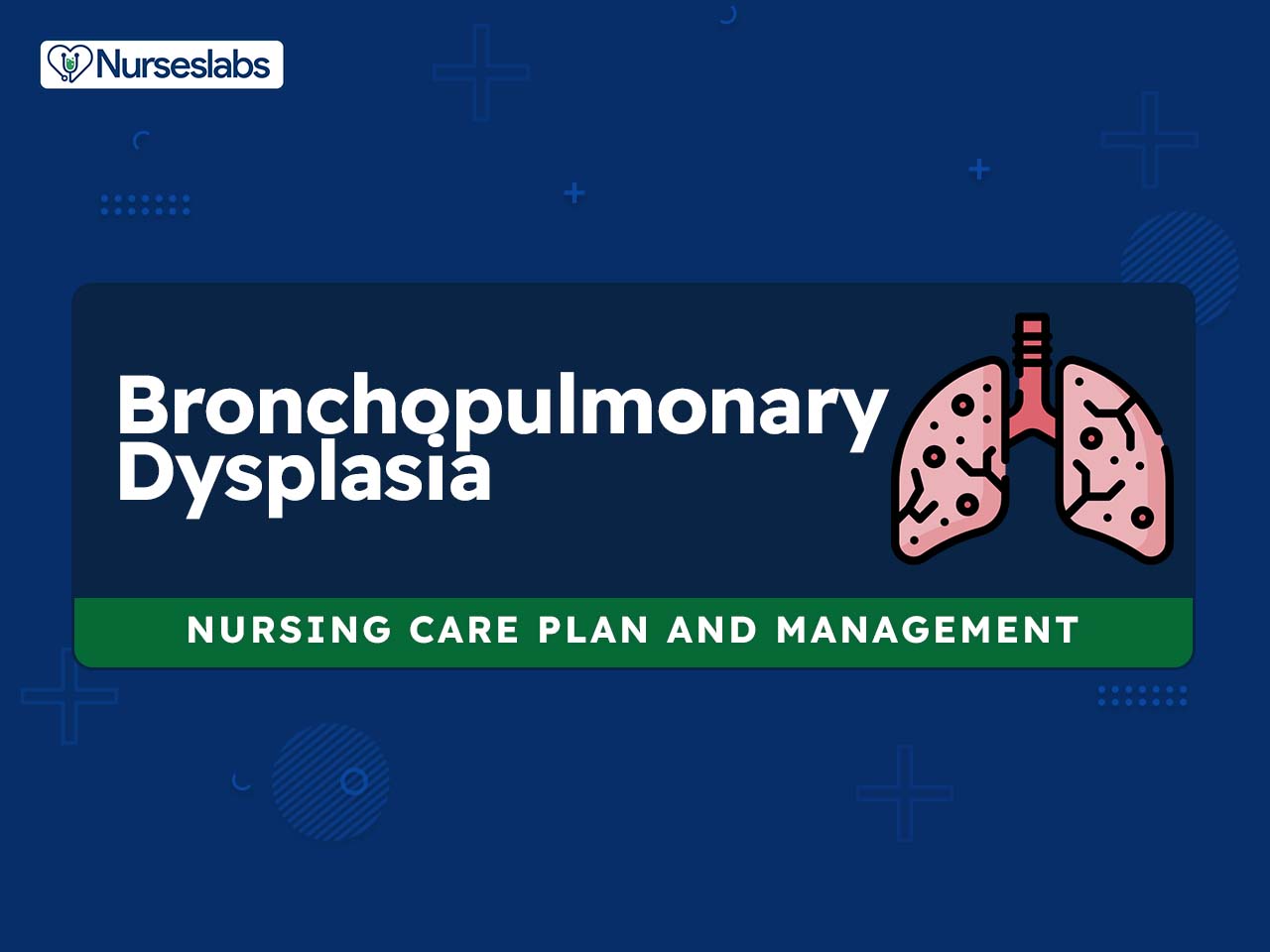

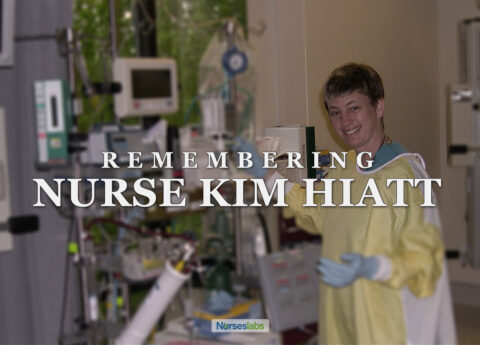
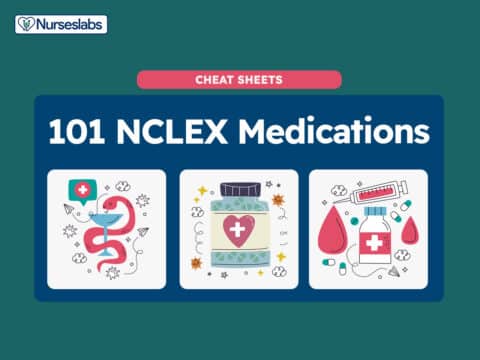





















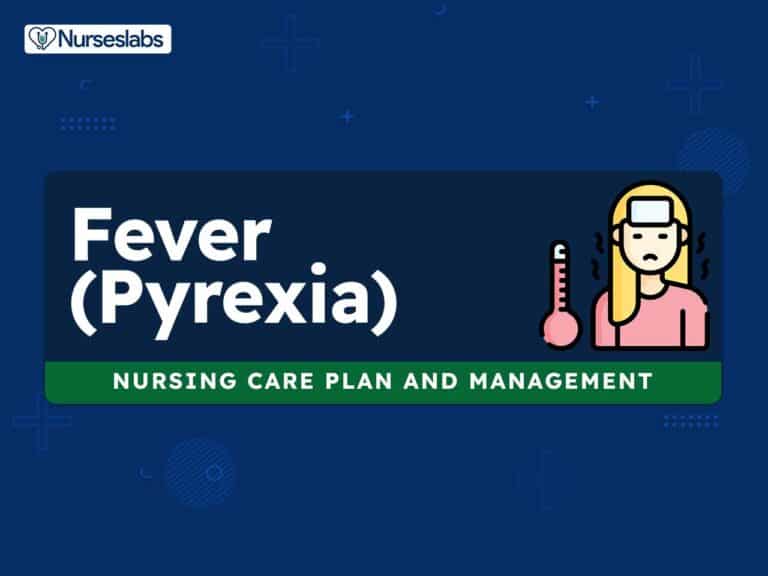
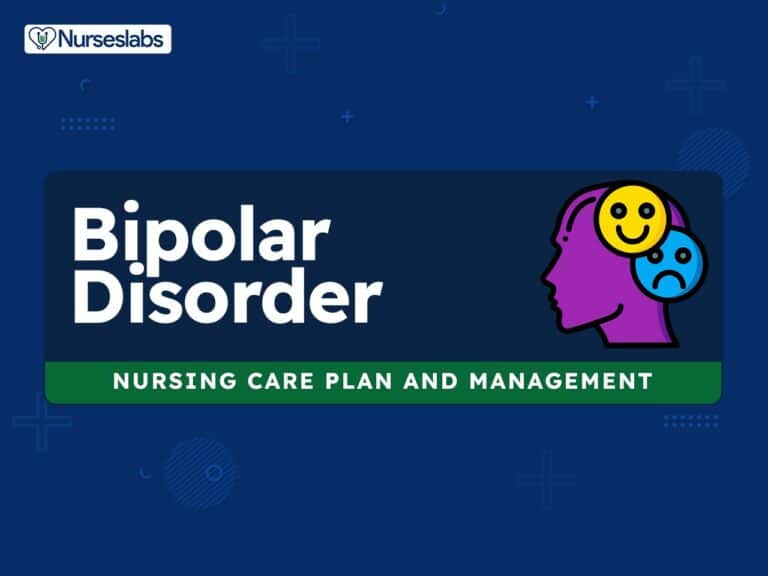

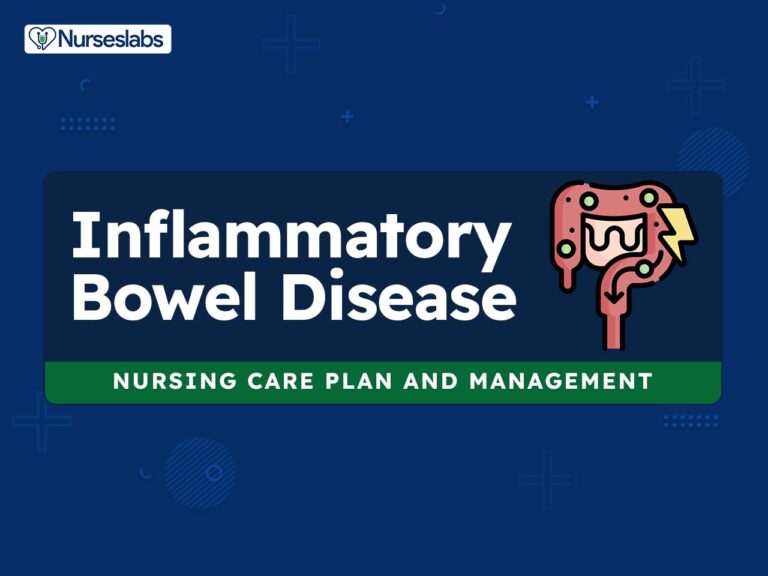
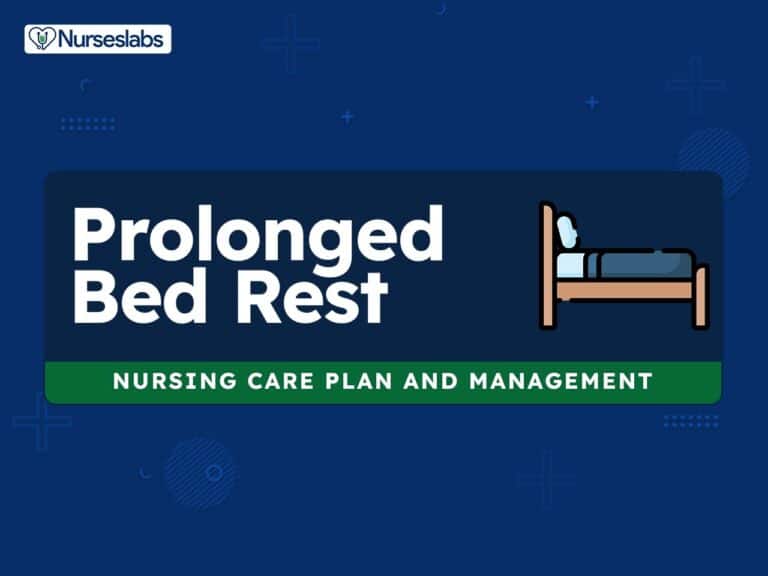
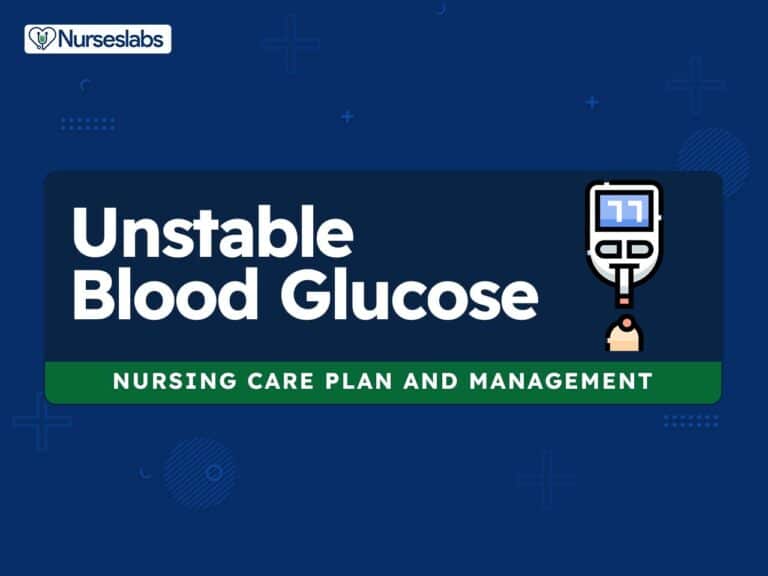



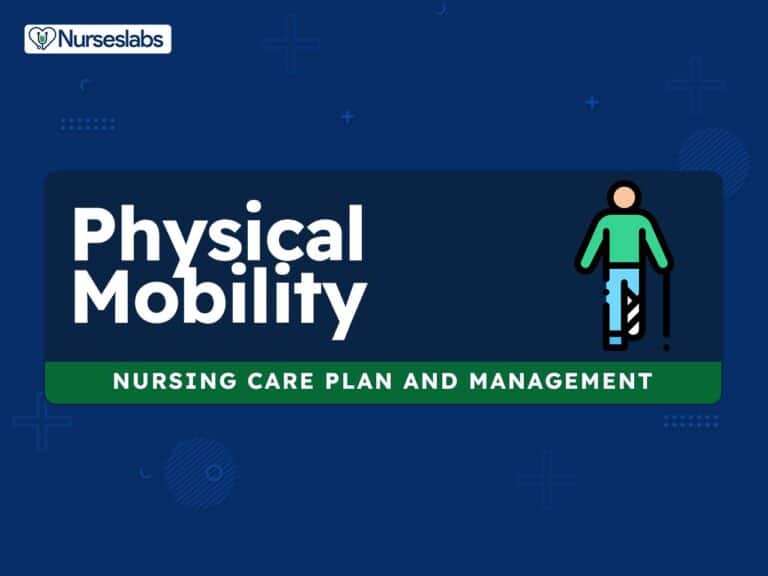

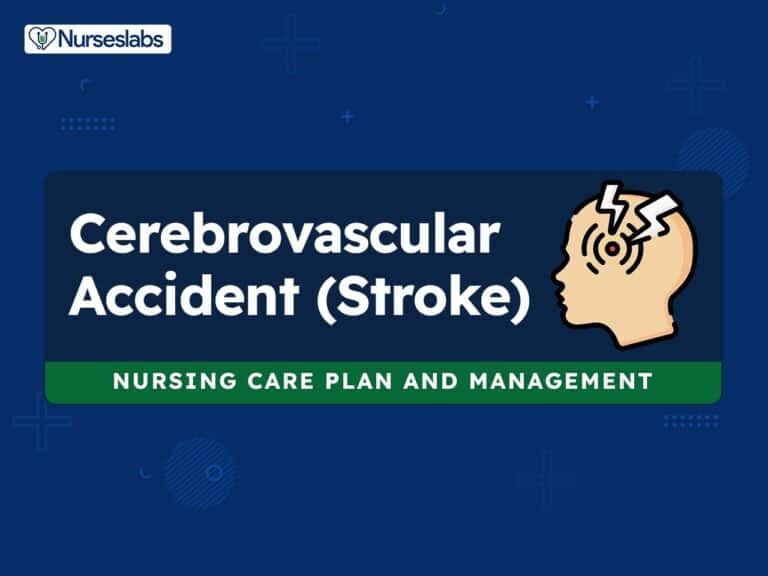
Leave a Comment